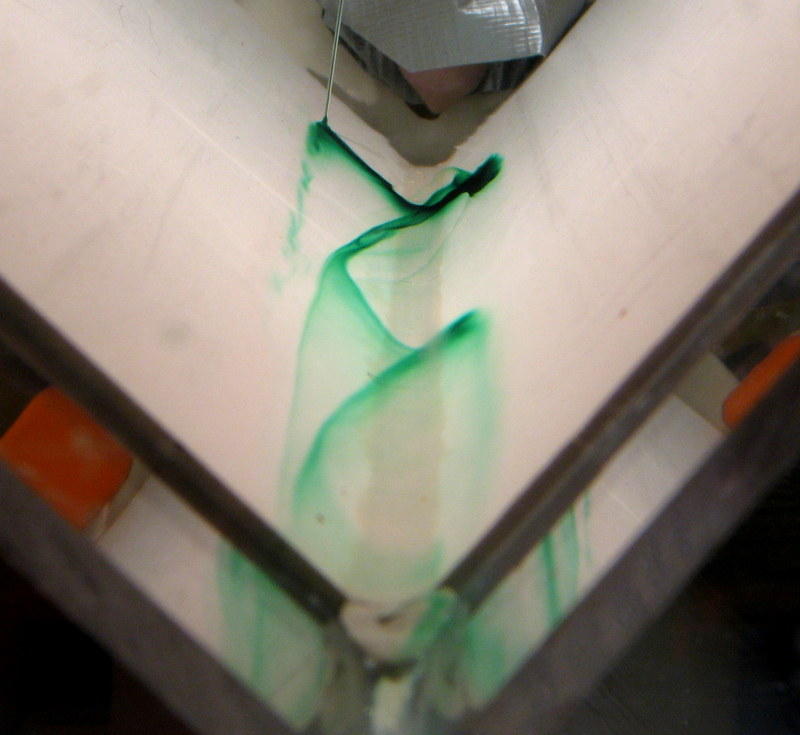Mixing in dense overflows
Dense water flowing from one ocean basin to another through a narrow strait or through a gap in an oceanic ridge will form a dense plume of gravity current - an overflow. Overflow regions are areas with intense mixing and water mass modification.
Hovedinnhold
Dense waters formed at high latitudes contribute to the deepest branches of the global thermohaline circulation. These ventilated waters enter the Atlantic as deep overflows across the Greenland-Scotland ridge or cascade down the Antarctic continental slope. The dynamics of overflows depend critically on the rate of entrainment of the ambient. On its way down the continental slope the dense plume entrains and mixes with the lighter ambient water, typically doubling the volume flux and changing its characteristics drastically. The properties of the deeper water masses globally are hence to some extent determined by mixing processes occurring locally in overflow regions.
Shear Instabilities:
The large density difference between the overflowing, dense water and the lighter ambient water gives rise to high velocities and high shear which may cause Kelvin Helmholz instabilities and intensive mixing.
Internal wave mixing:
Observations suggests that breaking of internal waves in the stratified interface contributes significantly to mixing.
Secondary circulation:
The combination of friction and the rotation of the Earth (the Coriolis force) gives rise to a secondary, transverse circulation which modifies entrainment and mixing.
Eddies:
Meso-scale eddies generated in the plume region will influence vertical mixing and also cause horizontal stirring.
Studies at GFI are focused on the Faroe Bank Channel Overflow and the Filchner Overflow.
Contact at GFI: Ilker Fer, Jenny Ullgren and Elin Darelius
Project: WEDDELL - Faroe Bank Channel Overflow Dynamics and Mixing
